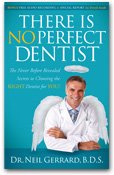Braces for children
Most braces are worn by children and young people although many adults have started wearing braces although this is usually for cosmetic reasons.
It is important that any sign of misaligned teeth, an overcrowded jaw or gaps between the teeth are treated sooner rather than later in order to prevent long term problems. These include malocclusion, increased risk of tooth decay and gum disease and damage to the jaw joints.
Problem of malocclusion in children and teenagers
The most common reason for a brace in a child or teenager is malocclusion or a bad bite. This occurs due to sucking a thumb or a pacifier, e.g. dummy. The problem with this is that the teeth and facial bones are still developing which mean that it is easy to push them out of position.
This causes the teeth to protrude or become crooked which then impacts upon their bite. Plus there is the additional problem of too many teeth coming through during childhood which causes overcrowding. This also results in a bad bite.
Normally, the jaws meet at the same point which enables them to open and close as well as perform a range of actions such as biting and chewing. But if this is out of kilter then it leads to an inefficient action which disrupts these actions and affects the normal function of the teeth.
What is the ideal age for a childhood brace?
It is better to treat an orthodontic problem at an earlier rather than later stage. Ideally, this should be between the ages of 7 and 14 for maximum results.
Two types of braces
There are two types of braces which are suitable for children:
- Fixed braces, e.g. tram track braces
- Removable braces
Fixed braces
These are meant to be worn on a permanent basis. They are fixed to the teeth with dental cement and the teeth moved via a series of small brackets and wires.
Fixed ‘tram track’ braces are discussed in more detail as a separate section. Find out more in the conventional orthodontic treatment section.
Removable braces
This is similar to the fixed ‘tram track’ brace except that it is designed to be removed before eating and drinking. It is also removed for cleaning.
Removable braces work in the same way as fixed braces in that they move badly aligned teeth back into the correct position. They are normally worn over the front teeth only and are held in place by clips or wires which fit over the teeth.
This type of brace should be worn for the maximum amount of time which means all day except for between meals and overnight. It needs to be cleaned twice daily which can be done as part of your normal dental routine, e.g. brushing and flossing your teeth.
The brace must also be cleaned after every meal.
You will be required to visit the dentist on regular occasions for a check up on your progress and adjustments such as tightening the brace.
Once the treatment has been completed the brace is removed and replaced with a retainer. This is a device which is similar in appearance to a brace which helps to maintain the position of the teeth.
A retainer can be worn on a temporary or permanent basis.
Dental
Information Guide
- Cosmetic
- Porcelain veneers
- Direct composite veneers
- Cosmetic crowns
- Cosmetic bridges
- Cosmetic fillings
- Direct composite bonding
- Cosmetic orthodontics
- General dentistry
- Dental Fear
- Dental implants
- Endodontic root treatments
- Orthodontics
- Invisible braces
- Fast Acting Braces
- Cosmetic braces
- Conventional orthodontic treatment
- Braces for children
- Tooth decay
- Dental hygiene
- Toothpastes and mouthwash
- Toothbrushing
- Flossing
- Interproximal brushing
- Dental treatment abroad
- Resolving problems
Cosmetic
General dentistry
Dental Fear
Dental implants
Endodontic root treatments
Orthodontics
Tooth decay
Dental hygiene
Latest news
-
Lorem ipsum dolor amet
13 OCT 2010Mauris eros sapien, mollis et varius vitae, mollis id augue...
-
Lorem ipsum dolor amet
13 OCT 2010Mauris eros sapien, mollis et varius vitae, mollis id augue...
-
Lorem ipsum dolor amet
13 OCT 2010Mauris eros sapien, mollis et varius vitae, mollis id augue...
the charity Smile Train
in conjunction with
There is No Perfect Dentist
 Buy The Book
Buy The Book
 Download a
Download a Listen to a
Listen to a  View our
View our